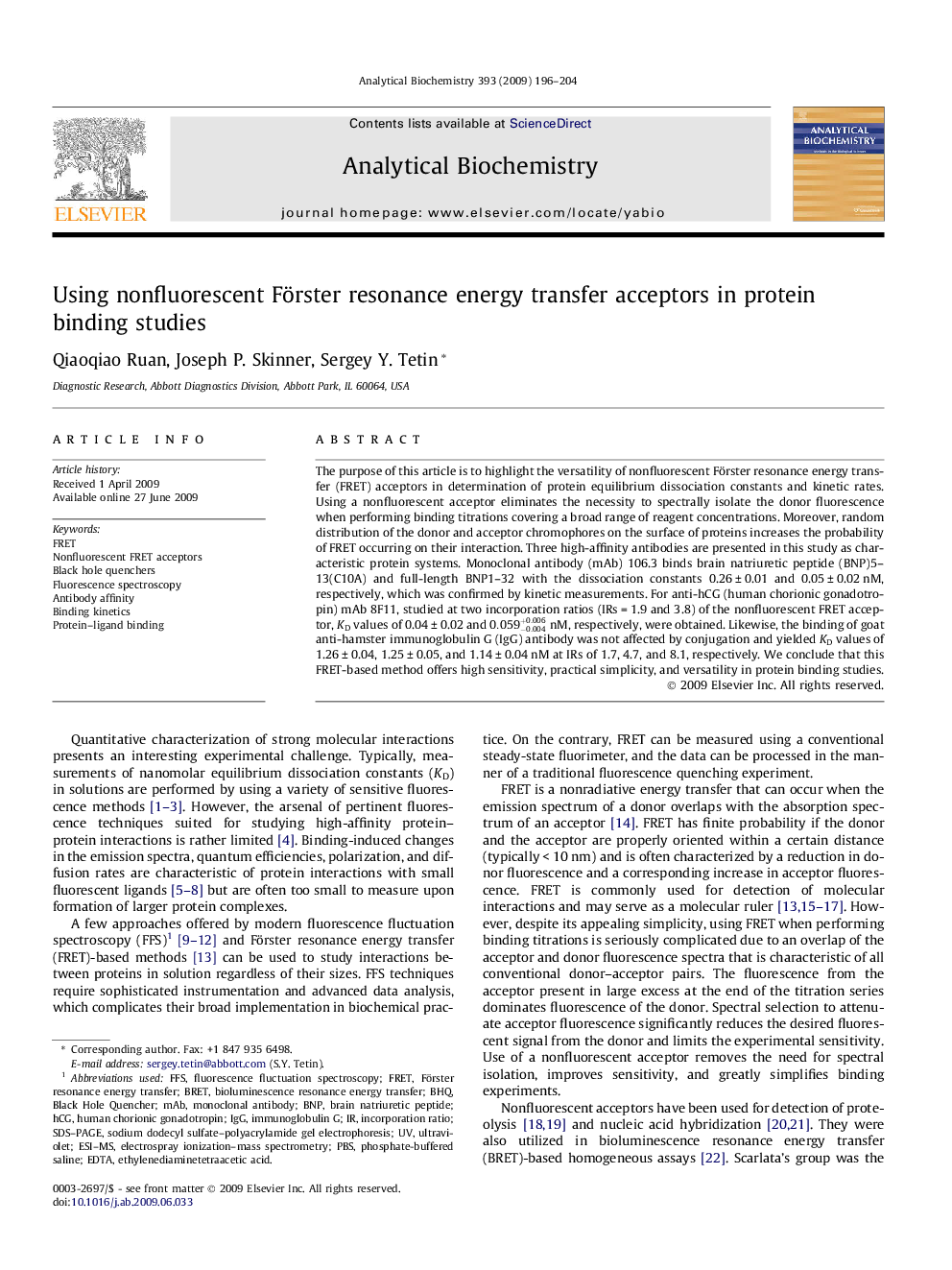| کد مقاله | کد نشریه | سال انتشار | مقاله انگلیسی | نسخه تمام متن |
|---|---|---|---|---|
| 1177046 | 961932 | 2009 | 9 صفحه PDF | دانلود رایگان |

The purpose of this article is to highlight the versatility of nonfluorescent Förster resonance energy transfer (FRET) acceptors in determination of protein equilibrium dissociation constants and kinetic rates. Using a nonfluorescent acceptor eliminates the necessity to spectrally isolate the donor fluorescence when performing binding titrations covering a broad range of reagent concentrations. Moreover, random distribution of the donor and acceptor chromophores on the surface of proteins increases the probability of FRET occurring on their interaction. Three high-affinity antibodies are presented in this study as characteristic protein systems. Monoclonal antibody (mAb) 106.3 binds brain natriuretic peptide (BNP)5–13(C10A) and full-length BNP1–32 with the dissociation constants 0.26 ± 0.01 and 0.05 ± 0.02 nM, respectively, which was confirmed by kinetic measurements. For anti-hCG (human chorionic gonadotropin) mAb 8F11, studied at two incorporation ratios (IRs = 1.9 and 3.8) of the nonfluorescent FRET acceptor, KD values of 0.04 ± 0.02 and 0.059-0.004+0.006nM, respectively, were obtained. Likewise, the binding of goat anti-hamster immunoglobulin G (IgG) antibody was not affected by conjugation and yielded KD values of 1.26 ± 0.04, 1.25 ± 0.05, and 1.14 ± 0.04 nM at IRs of 1.7, 4.7, and 8.1, respectively. We conclude that this FRET-based method offers high sensitivity, practical simplicity, and versatility in protein binding studies.
Journal: Analytical Biochemistry - Volume 393, Issue 2, 15 October 2009, Pages 196–204